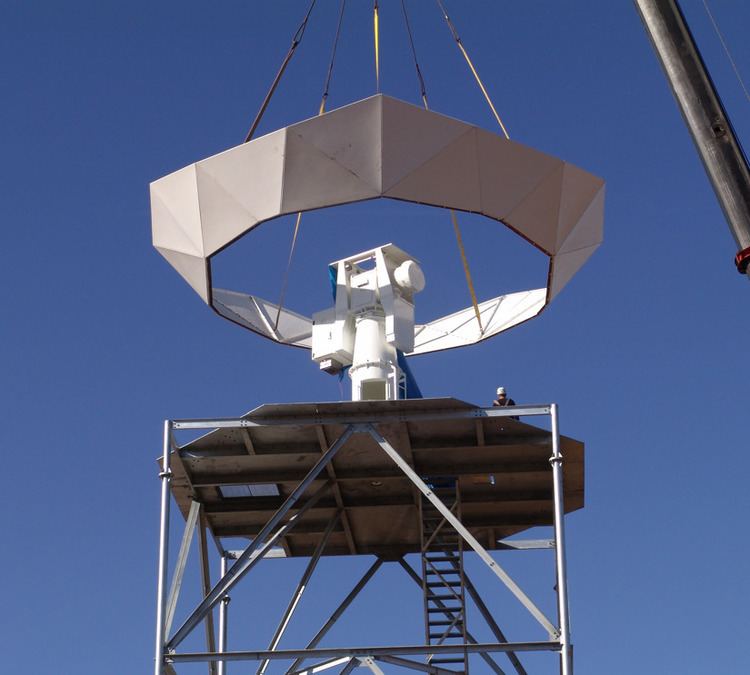OU-PRIME (Polarimetric Radar for Innovations in Meteorology and Engineering) is an advanced Doppler weather radar. It was completed in January 2009 after a ten-month construction period and commissioned on April 4, 2009. It is operated by the Advanced Radar Research Center (ARRC) at the University of Oklahoma (OU). The radar was manufactured by Enterprise Electronics Corporation to provide OU students and faculty a platform for research and education in the field of radar meteorology. This C-band polarimetric radar has the highest resolution of any C-band, polarimetric, research, weather radar in the United States and possibly the world.
OU-PRIME was struck by lightning on 19 March 2012 around 9:20am local time. Since then, the radar has not been operated due to damage.
OU-PRIME, aka OU', is located on the Research Campus of the University of Oklahoma within walking distance of the National Weather Center building. Through a unique design, OU-PRIME can provide real-time time-series data providing opportunities for rapid developments in radar signal processing algorithms. Because of its C-band wavelength and 1 MW transmit power, OU-PRIME is extremely sensitive to clouds with approximately 10 dB more sensitivity over the NEXRAD system (S-band).
Characteristics:
Location 35°10′48.8″N 97°26′0.6″WRadiating Center Height is 80 feet (24.4 m)Operating frequency: 5510 MHz (C-band)Wavelength: 5.44 cmPulse Length: 0.4, 0.8, 1.0, 2.0 µsPulse Repetition Frequency: 300–2000 Hz, 1 Hz step1 MW Peak Power (magnetron with solid-state modulator)8.5-meter Andrew precision C-band dishHigh angular resolution: 0.45 degrees @ -3 dB pointsGain: 50 dBiSidelobe Level: Better than -26 dB one-wayCross-Pol: Better than -30 dBRotation rate: 6-25 deg/s under typical scanning (30 deg/s max)Minimum Detectable Signal: -112 dBmRadar Sensitivity: -15 dBZ at 50 kmNoise Figure: 3 dBSimultaneous dual-polarizationFlexible computing platform for real-time algorithm developmentReal-time I/Q data recording/processingA/D converter resolution: 16 bitReceiver bandwidth: 6 MHzGate spacing: 25–500 mNumber of range gates: up to 2200Clutter suppression: 60 dB (automatic detection/suppression using CLEAN-AP [1])Advanced signal processing framework based on new STEP algorithm, including clutter estimation/suppression and multi-lag moment estimationResearch and educational pursuits
An integral part of OU's Weather Radar CurriculumNon-precipitating cloud studiesAdvanced signal processing algorithm development (e.g. Doppler spectrum)Weather radar polarimetry / QPENext-generation digital receiver designSevere weather detection algorithms based on spectral processingPrecipitation microphysicsRadar-based aerobiologyAdaptive real-time processingCloud physics and electrificationStorm dynamics
